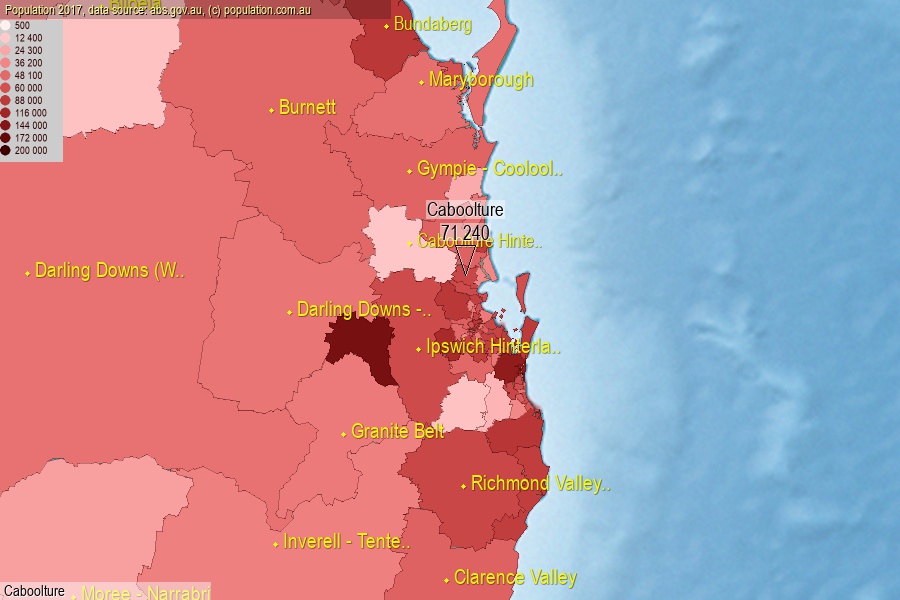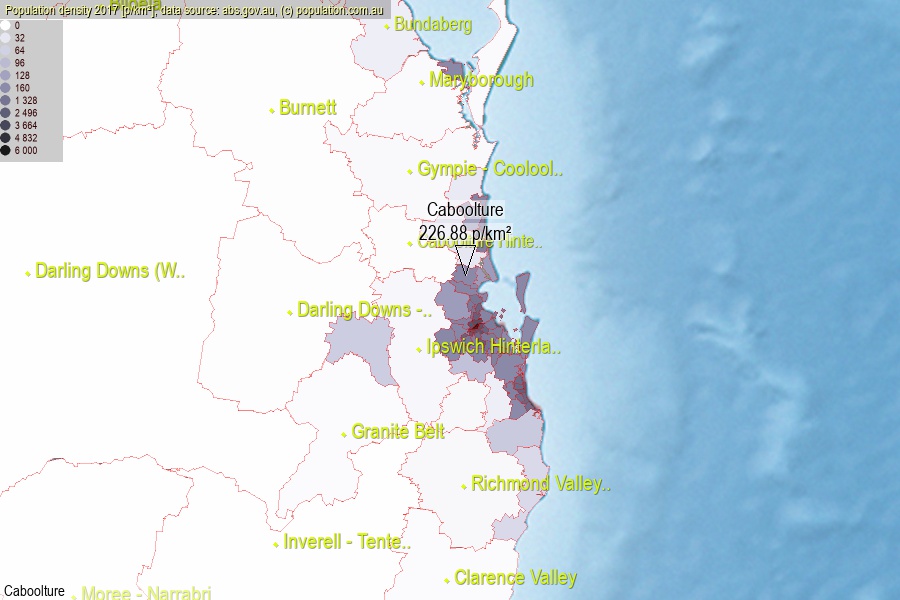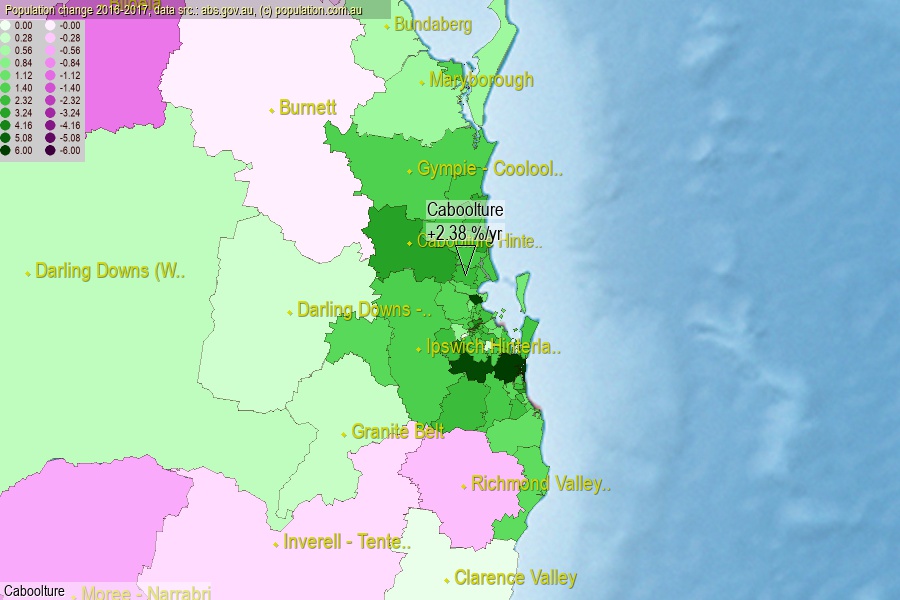 population.com.au
population.com.auLast official estimated population of Caboolture (as Statistical Area Level 3) was 71 240 people (on 2017-06-30)[2]. This was 0.29% of total Australian population and 1.427% of QLD population. Area of Caboolture is 314.00 km², in this year population density was 226.88 p/km² . If population growth rate would be same as in period 2016-2017 (+2.38%/yr), Caboolture population in 2025 would be 85 969. [0]



Click to enlarge. Caboolture is located in the center of the images.
Population [people], population density [p./km²] and population change [%/year] [2]
View borders » (new window) [4]
[1991-1992] +8.39 %/Y
[1992-1993] +11.18 %/Y
[1993-1994] +8.82 %/Y
[1994-1995] +6.36 %/Y
[1995-1996] +3.92 %/Y
[1996-1997] +2.86 %/Y
[1997-1998] +2.82 %/Y
[1998-1999] +2.11 %/Y
[1999-2000] +1.83 %/Y
[2000-2001] +1.07 %/Y
[2001-2002] +2.05 %/Y
[2002-2003] +3.38 %/Y
[2003-2004] +4.37 %/Y
[2004-2005] +3.40 %/Y
[2005-2006] +2.89 %/Y
[2006-2007] +4.73 %/Y
[2007-2008] +5.45 %/Y
[2008-2009] +5.60 %/Y
[2009-2010] +5.15 %/Y
[2010-2011] +3.91 %/Y
[2011-2012] +3.88 %/Y
[2012-2013] +2.98 %/Y
[2013-2014] +2.34 %/Y
[2014-2015] +2.14 %/Y
[2015-2016] +2.13 %/Y
[2016-2017] +2.38 %/Y
[0] Calculated with linear interpolation from officially estimated population
[1] Read more about SA3 and Australian Statistical Geography Standard (ASGS) on abs.gov.au
[2] Population data from Australian Bureau of Statistics (Population and density: 2017; change: 2016-2017)
[3] Digital Boundaries: Australian Statistical Geography Standard (ASGS) 2016.
[4] Border coordinates are simplifyed using Ramer-Douglas-Peucker algorithm.